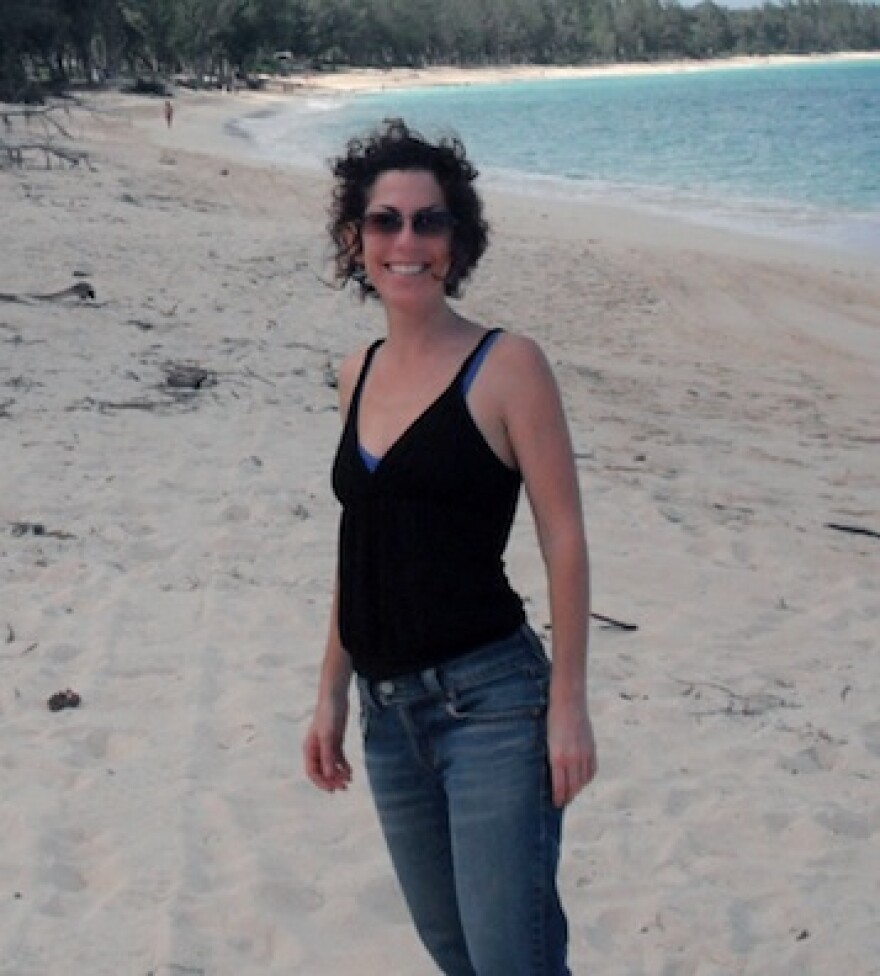In just twenty years, awareness of climate change has progressed to climate anxiety. According to Time Magazine, mental health studies show “eco-anxiety” exploded last year from Greenland to Australia. A new exhibit at UH M?noa aims to work through the grief and denial toward community action.

Inundation opens at the UH M?noa Art Gallery this Sunday, January 19 with artist talks and poetry by Kathy Jetnil Kijiner. The show continues through February 28, 2020 then moves to Hawai‘i island in March.
We’ve learned that water can threaten us without slamming in from the ocean or pouring from the sky. On a sunny day, roads can be inundated by water gushing out of the storm drains, as if out of nowhere.
Inundation is also a psychological state, and the theme and title for a new show at the UH M?noa Art Gallery. Inundation is curated by Jaimey Hamilton Faris, associate professor of Art History and Critical Theory at UH M?noa. Hamilton Faris says, the Yale Climate Center has done a study that shows three quarters of Americans understand the importance of climate change but only 30% talk about it.
“It’s that talking about it, it’s that sharing of experiences that we need more of in order to get over the anxiety of the unknown. (We need) to really reflect on what the true problems are, how deep they go into our value system, and then to imagine potential futures where as many people as possible contribute to the resolution of climate change. I think that’s where art can be really, really important.”
Hawai‘i artists K?‘ili Chun and Mary Babcock join artists from the Pacific, including from the Philippines, Singapore, Taiwan, and elsewhere, for the Inundation show at UH Art Gallery--and there are lots of community events. The show will travel to Donkey Mill Art Center on Hawai‘i island in March. Cultural liaison Kealoha Fox, is a participant in Inundation, and says art can create a safe space, like a kipuka, or oasis of vegetation somehow spared by lava flows.
“One of the things that’s really exciting about Inundation on Hawai‘i island as well, is that we have these contemporary kipuka that are opening up spaces to have really important conversations but are also generating social bonds across the community that are positive, that are holistic, and that can be valued by everyday people.”
Science has been front and center in our climate education, and now, policies and priorities dictate the road ahead. The idea here is, people need to talk to de-stress and figure it out.
“You don’t have to be a scientist, you don’t have to be an economist, you don’t have to be a publicly elected official to be a part of the conversation and to also be part of the solution. The conversation we’re going to have and the art that‘s going to be showcased is a really critical link to help heal our communities and the environment through our relationships and by us coming together.”
Hamilton Faris points out, the systems that produced the problem may need profound reworking.
“If we are going to think beyond short term solutions and not redo some mistakes we made in the past, the linkage of environmental rights and social values is important to making the right decisions for climate change solutions.”
“Not just in Hawai‘i but across the Pacific, Neighbor Islands are often put on the back seat or the back burner. The conversations tend to be centered around Honolulu-based solutions. I think what we’re trying to do as a movement for the community is to diffuse where the power is.”
Fox points to knowledge bases that have maintained their strength on the neighbor islands.
“We might be talking about subsistence fishing, or organic agriculture, opportunities to community-build by mentoring and training the next generation of youth...There’s a lot of that that’s already happening on the neighbor islands, so when I think about climate justice, it’s really about social strengthening, and reinforcing and retying our bonds together."
That, truly, is the function of art.




